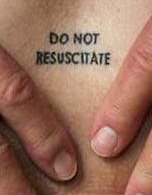Air Medical Crash
From AOL:
WASHINGTON (May 31) - A medical helicopter crashed on its way to Washington Hospital Center, killing the patient and injuring three crew members.
The patient, Steven Gaston, was being transported from another hospital about 10 miles away and died in emergency surgery late Tuesday after the crash, Washington Hospital Center spokesman LeRoy Tillman said.
The pilot, nurse and paramedic were listed in serious but stable condition with broken bones and tissue injuries, said Dr. Janis Orlowski, the hospital's chief medical officer.
The chopper crashed in clear conditions less than a mile from the hospital on a hilly area of a golf course at the U.S. Soldiers and Airmen's Home.
One witness said he saw the low-flying helicopter and heard it hit a tree about 500 yards from the golf course clubhouse.
"It was lumbering," said Billy Bartlett, who works at the golf course's pro shop. "You knew something wasn't right."
The National Transportation Safety Board and Federal Aviation Administration were investigating.






